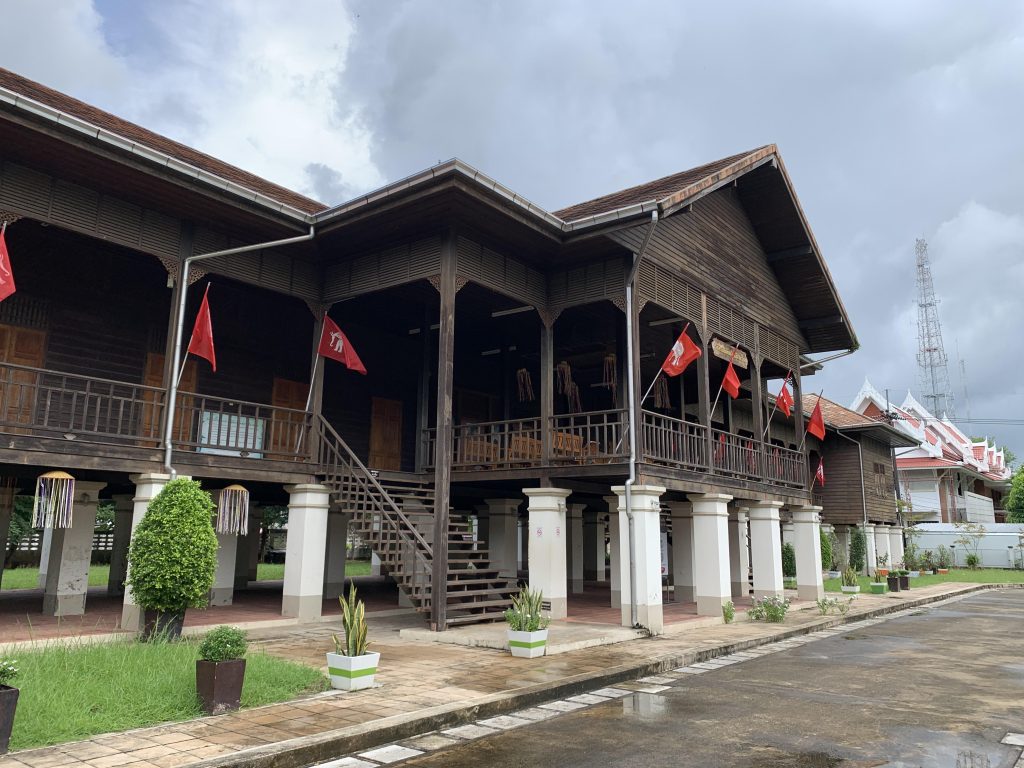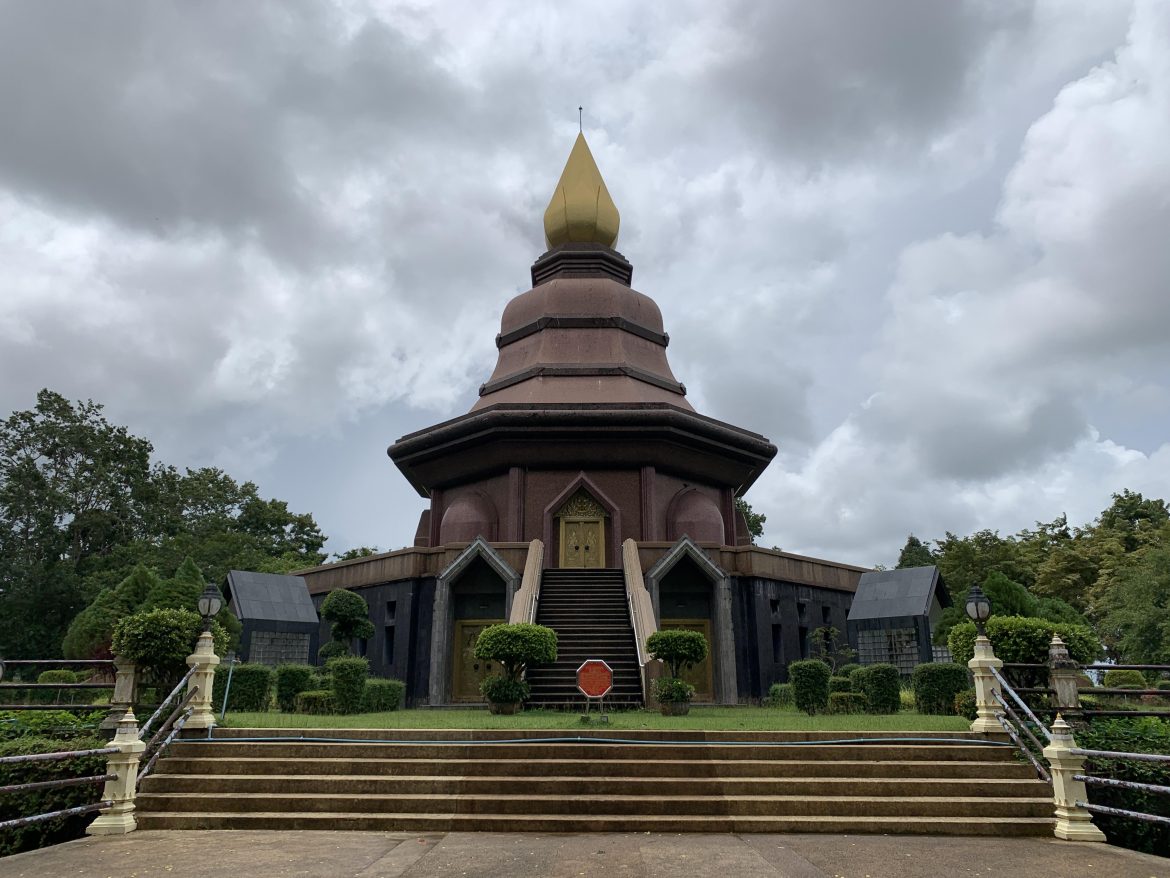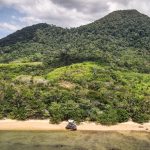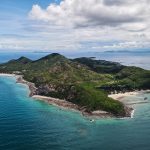For most tourists, the city of Trat is only a transit point for trips to the popular Koh Chang, Koh Mak and Koh Kut islands. But is it worth stopping for a little bit longer?
There aren’t any breathtaking sights or big resorts or party streets full of bars. It’s a normal town. Just that. So if you are looking for a local atmosphere, away from the crowds of tourists that you may encounter on the islands, make at least a few hours stop in Trat and you won’t regret it.
Trat is also a paradise for fruit lovers as it is, next to Chanthaburi, one of the main fruit growing areas of Thailand. Especially between March and August, local markets are full of inexpensive varieties of locally grown fruits.
Historic background
The history of Trat starts in the early 17th century during the reign of King Prasat Thong of the Ayutthaya Kingdom. It was known as Mueang Thung Yai and due to its strategic location, it had an important role in the development of the country’s stability. The town of Trat later become a community of Chinese merchants.
When Ayutthaya fell to the Burmese in 1767, Trat served as a checkpoint and buffer city and was responsible for providing provisions to King Taksin the Great before he moved his forces from Chanthaburi to Ayutthaya. King Taksin later on succeeded in getting rid of the Burmese invaders and freed the kingdom from foreign rule.
In the Rattanakosin era, during the 1893 Paknam crisis, French troops landed and occupied the western part of Chanthaburi province. In 1904, Siam was forced to surrender Trat to French Indochina to regain Chanthaburi. Three years later, however, finding that Trat with its almost entirely Thai population was hard to rule, the French returned Trat to Thailand on 23 March 1907, in exchange for larger areas along the Mekong river, which included Battambang, Siam Nakhon, and Sisophon, which all had a Khmer majority population.
During the French-Thai War of 1940–1941, the Vichy French navy sailed from Saigon to seize Trat. The unprepared Thai warships were caught by surprise. By the end of the 17 January 1941 Battle of Ko Chang, three Thai ships had been left sinking: the HTMS Chonburi, HTMS Songkhla, and HTMS Thonburi. French casualties were light with no ships lost. The Japanese government negotiated a truce, which ended the conflict without further fighting.
When the Vietnamese pushed the Khmer Rouge out of Cambodia in 1985, Pol Pot fled to Thailand and made his headquarters in a plantation villa near Trat. It was built for him by the Thai Army and nicknamed “Office 87”.
based on wikipedia.com
How to get to Trat?
By bus/minivan
The town can be easily reached by buses or minibuses from Bangkok. It’s more than 300 km and takes about 5 hours of travel time.
If you travel from Cambodia, Trat is about 90 km west of the border and one of the frequent buses that depart from Had Lek can take you there.
By plane
Trat has also its own small airport with flights from Bangkok operated by Bangkok Airways. However, the total cost of travel, including transfer to the town or pier to the islands is totally not worth it.
When to go?
The town itself can be visited at any time of the year but if you want to continue the visit to the islands, the best would be the cool season, which runs from November to the end of February, and the hot season, which runs from March to April. The remaining part of the year is the rainy season, with unpredictable weather and a quiet atmosphere.
How long to stay?
It’s a small town so I would say that one full day or even half of it should be enough to visit all the interesting places and try local food.
Where to stay?
I spent one night in Mukda Guesthouse and it was perfectly located within walking distance of all sights. The room was very clean and comfy. I can totally recommend it!
Getting around
The best is to just walk. Alternatively, you may want to rent a bicycle or take a motorbike taxi. Grab transportation doesn’t work here, so you have to look around on the street to find a driver.
Places to visit
Wat Buppharam
It is thought to be the oldest temple in the city, built in the Ayutthaya period. Have a look at the praying hall, the chapel and the Vikhara temple. There is also a folk museum with Buddha images and potteries.
Residence Kampot
Located on Lak Muang Road in Talat Yai area in the center of Trat. The place was built during the reign of Chulalongkorn The Great (Rama V) when Trat was taken over by the French. It was a residence of a French bureaucrat authorized by the French government to govern Trat province and became a governor’s residence later. The Residence is a 3-storey semi-wooden house, topped with a hip roof.

Trat Museum
Housed in former City Hall on Santisook Road. It is a large wooden building that was originally built during the French occupation. Over the years it fell into disrepair and was unused before being rebuilt in the early 2000s. The museum covers the history of the Trat area. From prehistoric settlements to its early days as an important stopover for Chinese traders and further to the occupation by the French in the early 1900s and the World War Two Battle of Koh Chang. Most information is in both Thai & English. Entry to the museum is 30 Baht for foreign visitors.

City Pillar Shrine
When King Taksin came to gather troops here, he ordered to build this city pillar which was believed by the Chinese to protect the city from enemies and to bring peace to the people. . The City Pillar is the centre of the Thai-Chinese relationship. Apart from the city pillar, an ancient Khmer style Shiva Linga, found in Huai Raeng Sub-district, is on display.
Wat Pai Lom
Due to the fact that it is the residence of Than Chaokhun Phra Wimonmethachan Worayannurak, the father of education, Wat Phai Lom seems to be the most important temple in Trat. Visitors can visit the Buddhist Garden which is open to the public as a meditation practice place.
Around Trat
Ban Nam Chiao Community
Ban Nam Chiao Community is an ecotourism community, which represents the coastal fishermen’s way of life. The villagers were originally Thai Buddhists. Later on, the mixture between two ethnicities was created since many of the Chinese merchants cruised in with goods to sell at the Ban Nam Chiao Pier, and finally settled in the area. In the reign of King Rama III, the Khmer Muslims (also known as Khaek Cham or Champa) immigrated from the war in their homeland to settle along the canal in Ban Nam Chiao. More of them kept coming in, so the two religions were allowed to get married, and they became like siblings and lived together in peace. Nowadays, most of the locals earn their living from fishery, rubber and orchard plantations, as well as trade.
Ko Chang Naval Battle Memorial
On 17 January 1941, one of the most important battles in the history of the Royal Thai Navy took place. At that time, the French advantageously invaded the Thai territorial waters in the Ko Chang area with its 7 battleships whilst the Royal Thai Navy only had 3. Yet, they had the spirit to fight bravely even though the battle ended with the sacrifice of 36 marine lives and all 3 battleships which sank into the sea.
Namtok Saphan Hin
Beautiful waterfall, well off the beaten track. Free entry!



